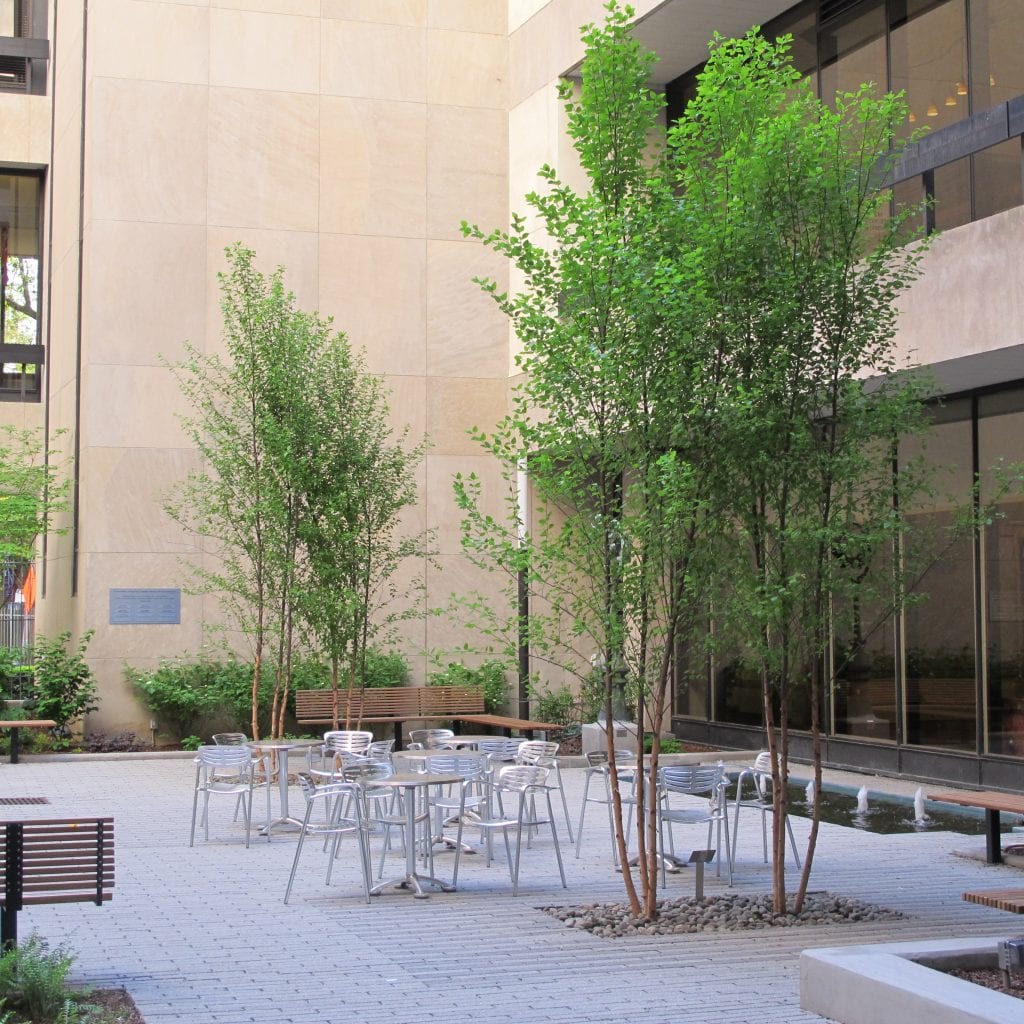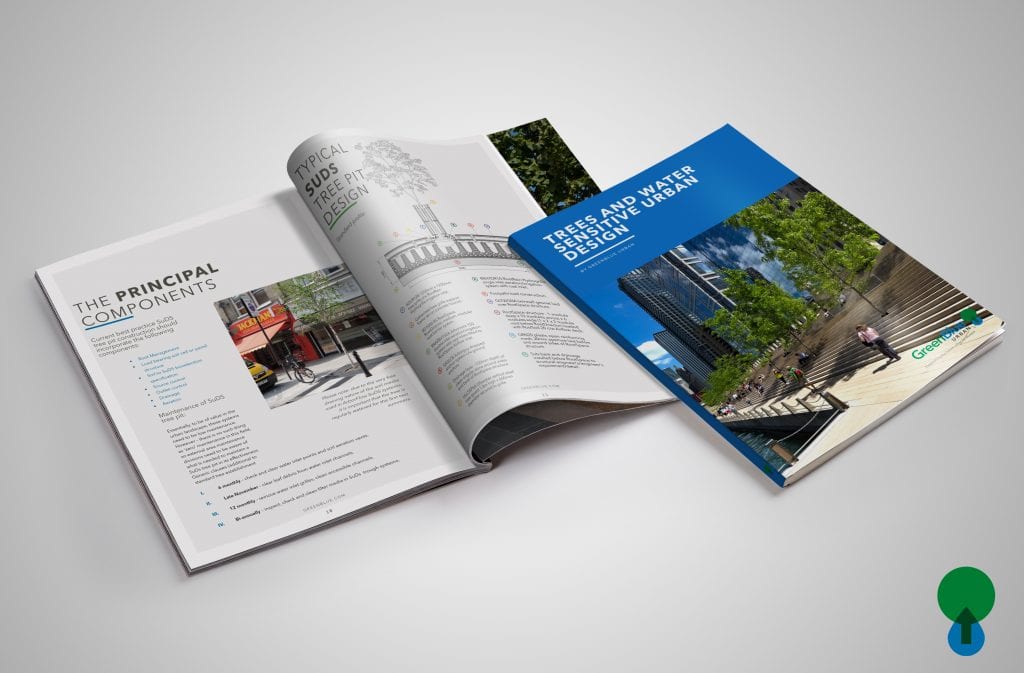Welcome to our 2018 Trees & Water Sensitive Urban Design publication – a step by step guide to successfully planting trees in a SUDS / LID context.
As large free-standing stormwater reservoirs, trees have few equals. Their natural capacity for canopy interception and water attenuation mean that they are increasingly being viewed as fundamentally important SUDS component in LID and WSUD schemes.

However, as living plants they also have critical rootzone requirements, as well as the need for correct balance of water and oxygen supply and a soil which drains freely but still retains nutrient.
GreenBlue’s ArborFlow has been designed to significantly reduce the velocity and flow rate of surface water runoff in urban areas – ideal for use in areas when space is at a premium. To see our own SUDS / LID tree pit installation click here.

“One tree within a 25m³ (885 ft³) GreenBlue Urban RootSpace system has 22% of volume available for stormwater attenuation”
– Kenton Rogers, Treeconomics
With a range of SUDS / LID case studies, this detailed guide is provided to enable landscape architects, civil engineers, and urban planners to obtain an overview of the key design parameters for urban trees in such projects. Whilst not exhaustive, it gives sufficient information to inform inlet design, estimate attenuation capacities and manage client expectations when integrating green and blue infrastructure into grey!


For every year a tree lives, its ability to contribute positively to the built environment through ecosystem benefits increases. Trees can live for hundreds of years, but this depends on the tree pit design which is a once in a generation opportunity. This informative guide will assist the industry in creating ‘working’ urban landscapes that our grandchildren will enjoy!


